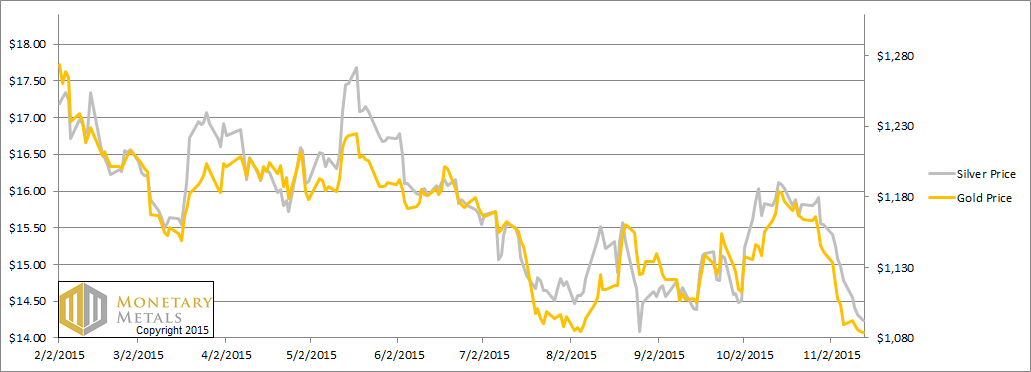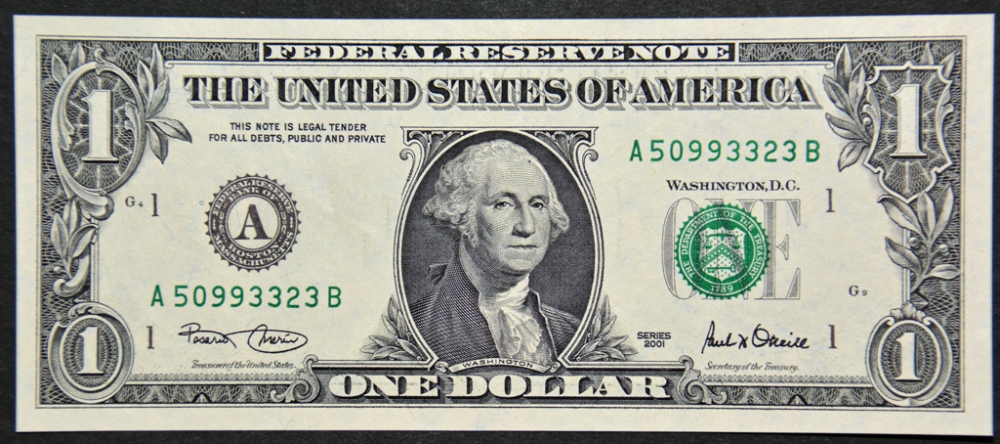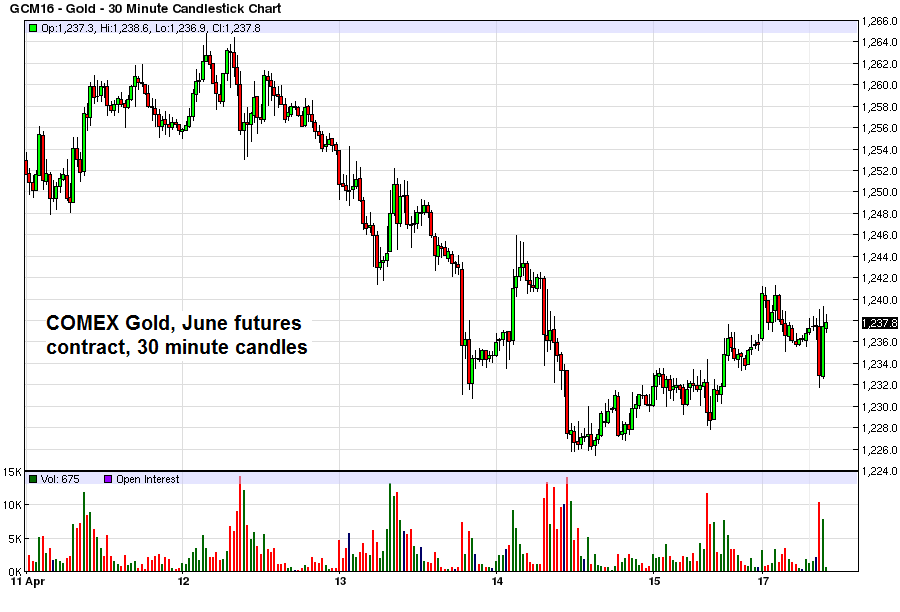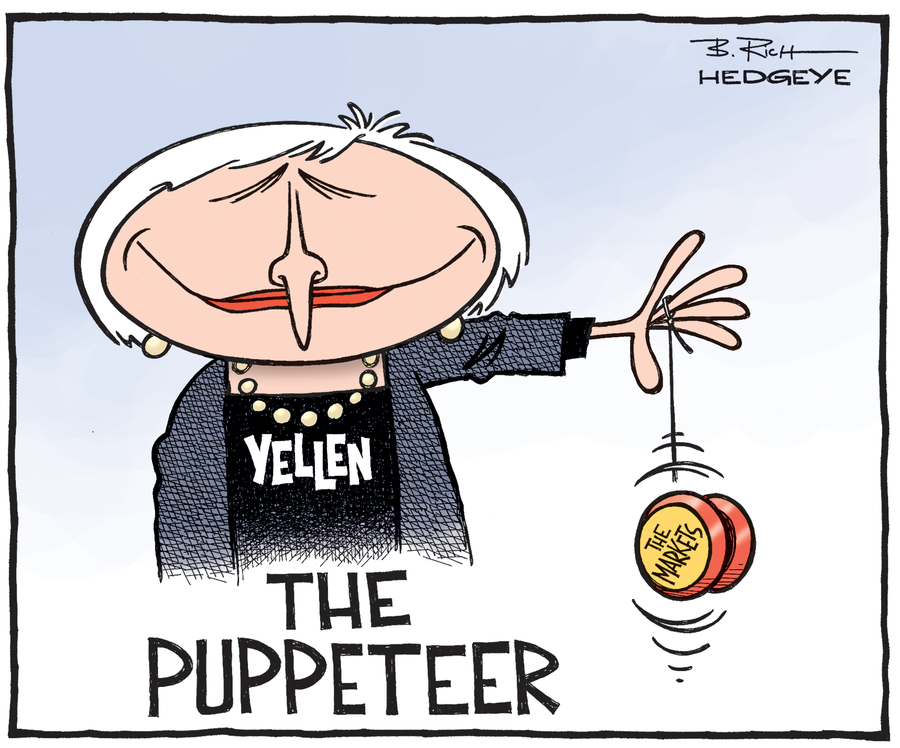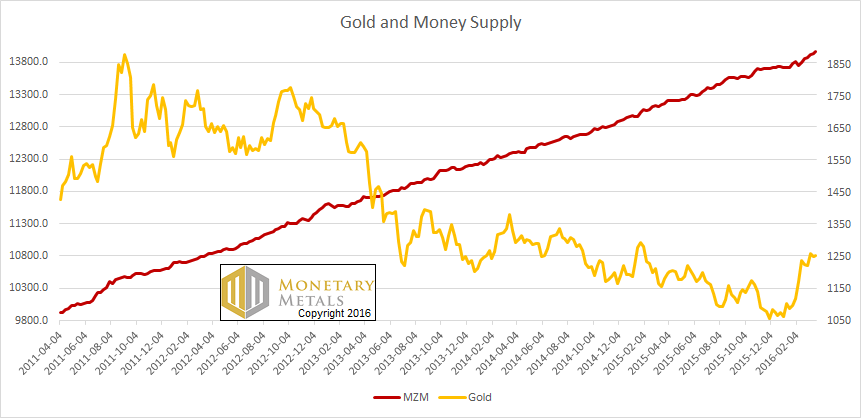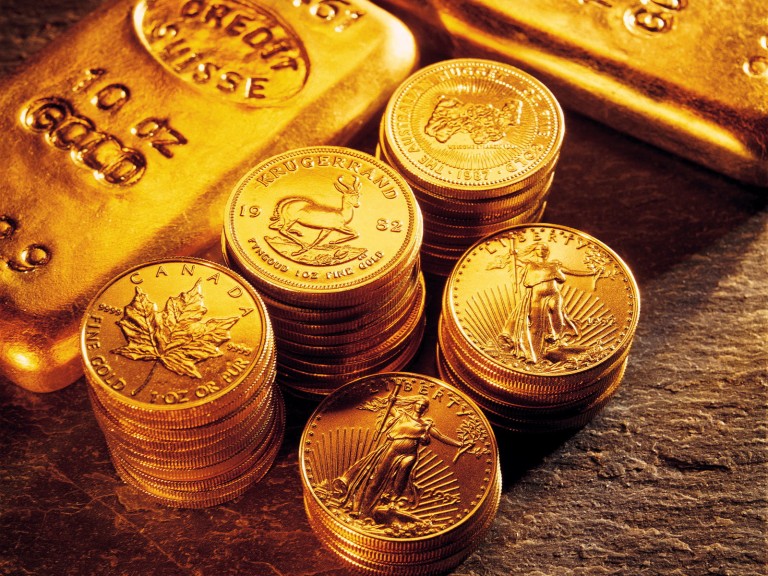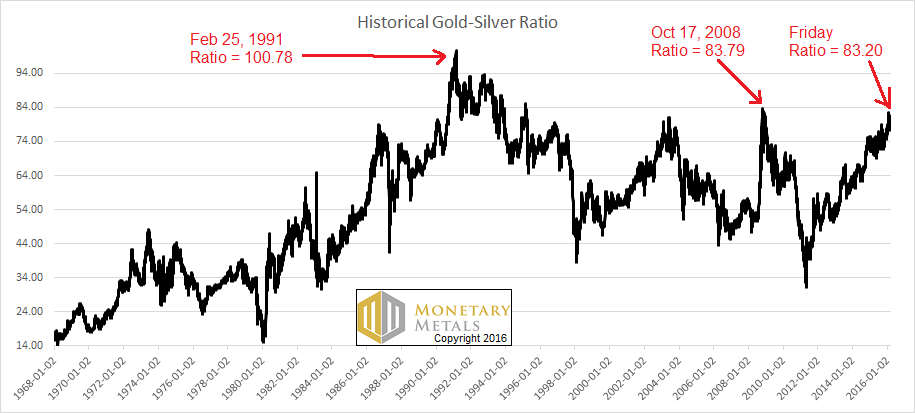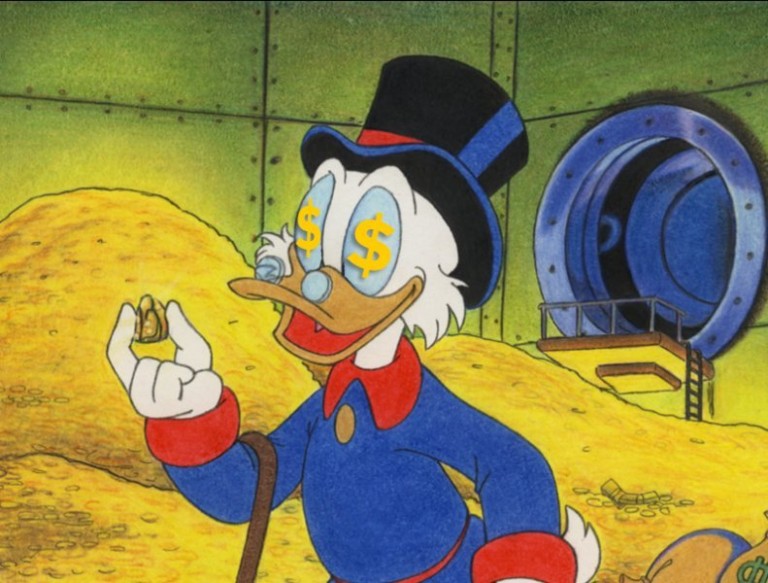In gold terms, the dollar went up a small 0.15 milligrams gold. The price of the dollar in silver went up considerably more as a percentage, 0.08 grams to 2.18g. Most people would say that gold went down and silver went down (though we continue to ask why should the prices of the monetary metals be measured in terms of the unstable dollar).
As always, we’re interested in one thing: did the fundamentals change, or did speculators sell off a bit more?
We call such price changes unimportant. That is not to say that it doesn’t matter to someone betting on the price to move in the opposite direction! We’re simply saying that not all price moves affect the fundamentals. Some do, some don’t.
Read on for the only true picture of supply and demand in gold and silver…
First, here is the graph of the metals’ prices.
We are interested in the changing equilibrium created when some market participants are accumulating hoards and others are dishoarding. Of course, what makes it exciting is that speculators can (temporarily) exaggerate or fight against the trend. The speculators are often acting on rumors, technical analysis, or partial data about flows into or out of one corner of the market. That kind of information can’t tell them whether the globe, on net, is hoarding or dishoarding.
One could point out that gold does not, on net, go into or out of anything. Yes, that is true. But it can come out of hoards and into carry trades. That is what we study. The gold basis tells us about this dynamic.
Conventional techniques for analyzing supply and demand are inapplicable to gold and silver, because the monetary metals have such high inventories. In normal commodities, inventories divided by annual production (stocks to flows) can be measured in months. The world just does not keep much inventory in wheat or oil.
With gold and silver, stocks to flows is measured in decades. Every ounce of those massive stockpiles is potential supply. Everyone on the planet is potential demand. At the right price, and under the right conditions. Looking at incremental changes in mine output or electronic manufacturing is not helpful to predict the future prices of the metals. For an introduction and guide to our concepts and theory, click here.
Next, this is a graph of the gold price measured in silver, otherwise known as the gold to silver ratio. The ratio moved upwards very sharply this week.
The Ratio of the Gold Price to the Silver Price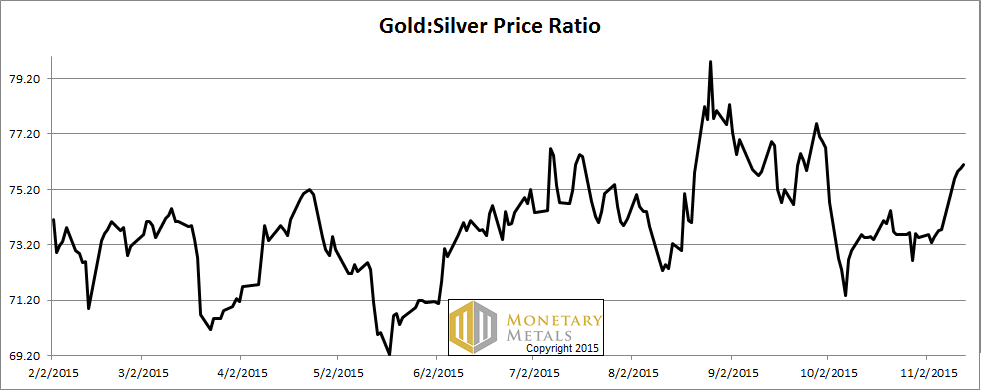
For each metal, we will look at a graph of the basis and cobasis overlaid with the price of the dollar in terms of the respective metal. It will make it easier to provide brief commentary. The dollar will be represented in green, the basis in blue and cobasis in red.
Here is the gold graph.
The Gold Basis and Cobasis and the Dollar Price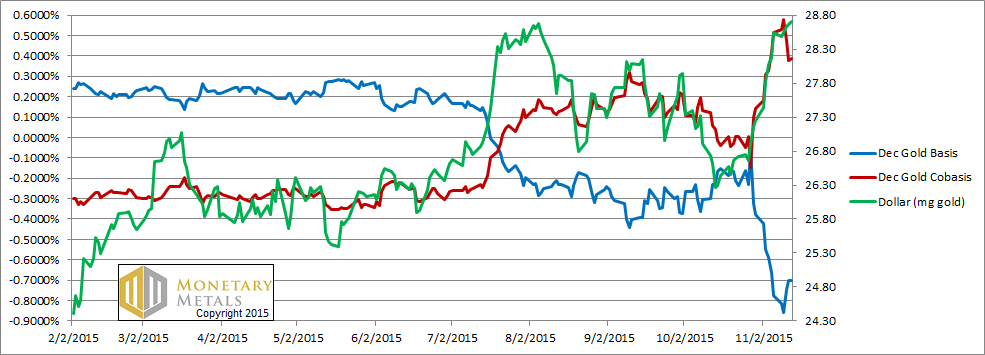
The price of the dollar tracked the cobasis (i.e. as the price of gold dropped, scarcity increased). Until Thursday. Gold became a bit more available to the market even at the lower price.
Now let’s look at silver.
The Silver Basis and Cobasis and the Dollar Price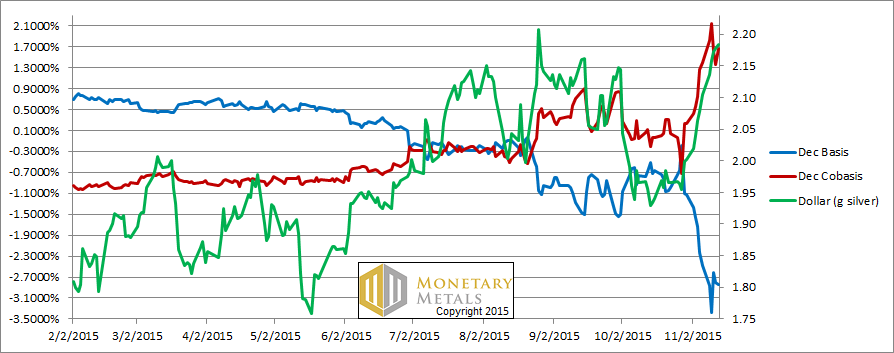
It’s a similar picture in silver, though the uptick in cobasis on Friday is sharper.
The fundamental prices of both metals fell a bit this week, though with the larger drop in silver price the fundamental is now a bit above the market price.
Gold is an international issue from China to Switzerland to India. It’s also a national issue in the US, as it is part of the Republican primary debate. And it is an issue in Arizona, soon to become (we hope!) the third state to pass a gold legal tender law. Please come to the Monetary Innovation Conference in Phoenix on Tuesday. Keith will discuss his ideas about falling interest rates and how it’s hurting everyone from savers to retirees. Entrepreneurs will discuss the problems they’re solving using gold. Please click here to register.
© 2015 Monetary Metals
Tags: Gold-Cobasis










